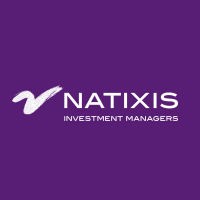Private Markets and The Illiquidity Premium
The best whitepapers on private vs public markets and the illiquidity premium
The illiquidty premium reflects the additional return that investors should expect in order to compensate them for the higher costs and greater difficulty associated with transacting illiquid investments.
Illiquid investments can include private equity, private debt, infrastructure, commercial real estate, OTC markets and smaller publicly listed companies, including those emerging or frontier markets. All of these, in theory should demand a higher long-term risk premium, in exchange for illiquidity risk.
When looking at public vs private market returns, how does one determine whether the illiquidity premium is worthwhile? Below we list some of the best white papers designed to help investors to understand, measure, critically assess and take advantage of the illiquidty premium.
There has been a gradual decline in the number of public companies in existence, as well as the overall proportion of capital held in public markets versus private markets. But what are the reasons why companies are staying private for longer, and should multi-asset investors consider the rise in private assets when determining their optimal portfolio mix?
Or perhaps it's possible for PE returns to be replicated through the careful construction of equity portfolios. The below papers address all of these issues, as well as other distinctions between public and private markets.

Capital Formation: The Evolving Role of Public and Private Markets (CFA Institute, 2018)
This paper by CFA Institute helpfully discusses how public markets have evolved, and reasons why there has been a shift towards private capital formation. The authors close with policy recommendations designed to ameliorate issues raised.
Private Assets: The Tradeoff Between Liquidity and Performance (PGIM Institutional Advisory & Solutions, 2019)
For compliance reasons, this paper is only accessible in the United States
Investors wishing to increase allocations to private assets should first ascertain not only their tolerance for illiquidity risk, but a quantifiable measurement of the tradeoff between liquidity and performance, thereby paving the way for a determination of their optimal mix of public and private assets.
Understanding and measuring the illiquidity risk premium (Willis Towers Watson, 2016)
Taking on additional illiquidity risk is a potentially appealing way to generate more yield in a low-return world. This Willis Towers Watson paper decomposes the illiquidity risk premium into three different dimensions and further examines what forces drive changes in IRPs.
Private Equity: The Emperor Has No Clothes (Enterprising Investor blog, 2018)
Institutional investors who are fond of private equity tout its low volatility, high returns, and low correlation to traditional assets, but are these claims too good to be true? To find out, the authors of this article attempt to replicate PE returns with public stocks.
Private debt assets for cashflow-driven investing strategies (Aviva Investors, 2018)
For compliance reasons, this paper is only accessible in the UK & Europe
Aviva Investors describes why introducing private debt assets in CDI can be beneficial - they can provide an uplift in yield through their illiquidity premia, plus diversification and downside benefits vs public debt markets.
Decreasing Number of Public Companies (Meketa, 2019)
Although there is no evidence that the US stock market is too concentrated, the number of publicly listed companies has fallen dramatically in recent years, and certain regulatory issues may lead private companies to stay private for longer.
Combining Public and Private Debt: Considerations for Investors (Neuberger Berman, 2018)
For compliance reasons, this paper is only accessible in certain geographies
Neuberger Berman explains why investors should consider an allocation that includes both public and private debt within a single portfolio.
Private vs. Public Equity Returns in Multi-Asset Portfolios (State Street, 2018)
How does an investor determine the optimal portfolio mix between public and private equity? First it may be necessary to de-smooth private equity returns. State Street Global Advisors explains how this is done.
Private Investing for Private Investors: Life Can Be Better After 40(%) - Cambridge Associates, 2019
Cambridge Associates describes how family offices and asset owners have benefitted when they have opted to allocate large percentages of their total assets to private investments.
Private markets commitment pacing and cash flow modeling (Verus Investments, 2019)
Due to the lengthy time horizon of most private equity investments, commitment pacing and the accurate modeling of PE cash flows are both critical aspects of maintaining targeted asset allocations for investors in private markets.
Companies Rush to Go Private (Milken Institute, 2018)
This 10-page paper by the Milken Institute examines the various reasons why, in recent years, private capital markets have become a favoured alternative source of company financing.
Private Equity Goes Public (Man Group, Jun 2018)
This paper from Man Group contains an explanation of liquid PE alternatives and their potential utility value for investors who may be under-allocated to private assets.
2018/2019 Private Equity Year End Review and Outlook (Debevoise & Plimpton)
Despite the amount of dry powder that presently exists, Debevoise & Plimpton see no signs of a slowdown in private equity fundraising activity in 2019. They also review 2018 US and EU PE activity from a taxation and regulatory perspective.





